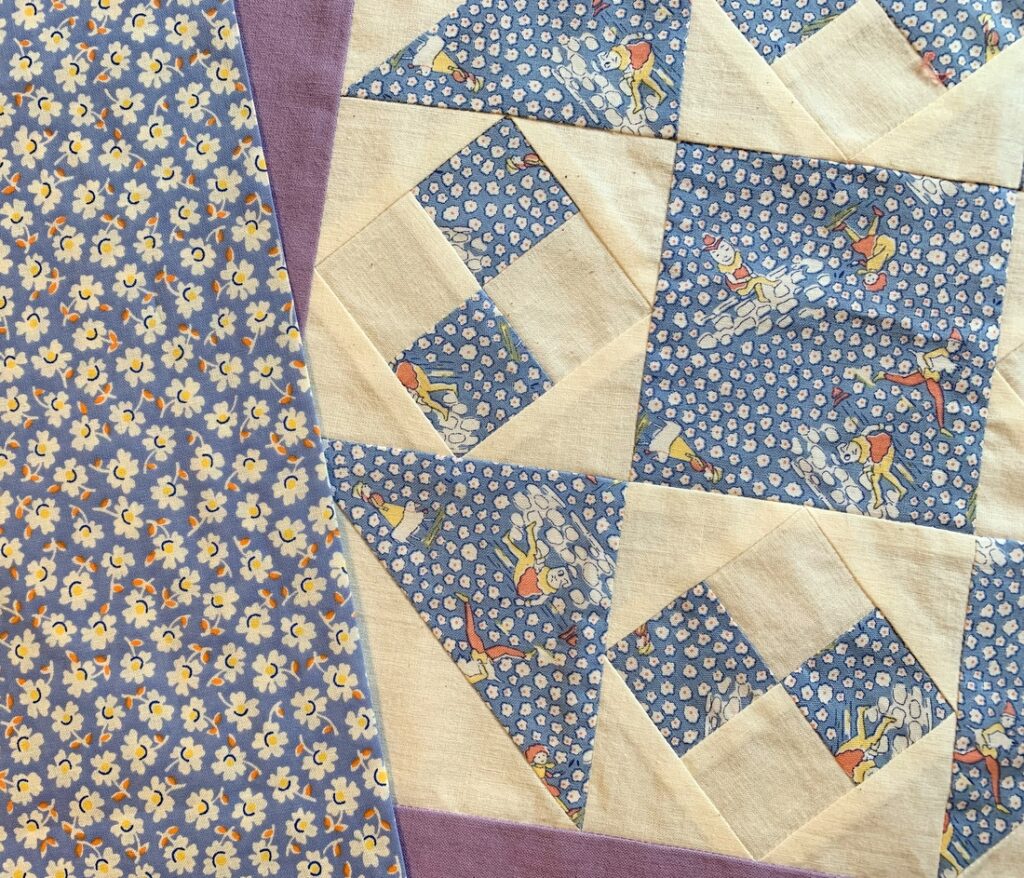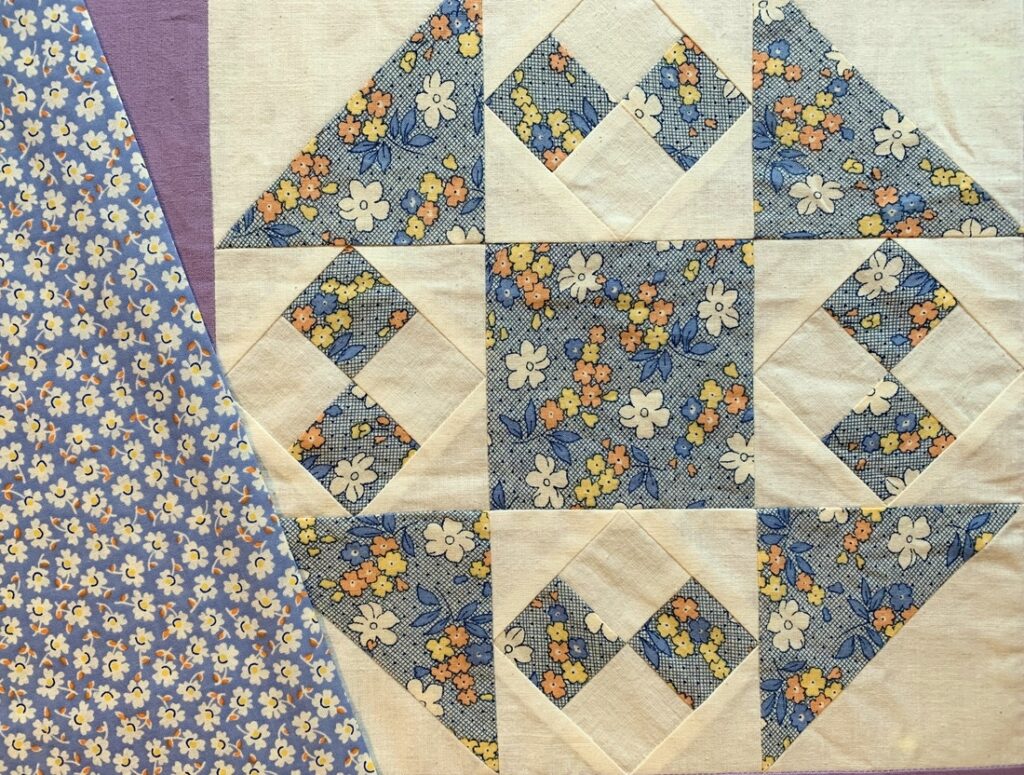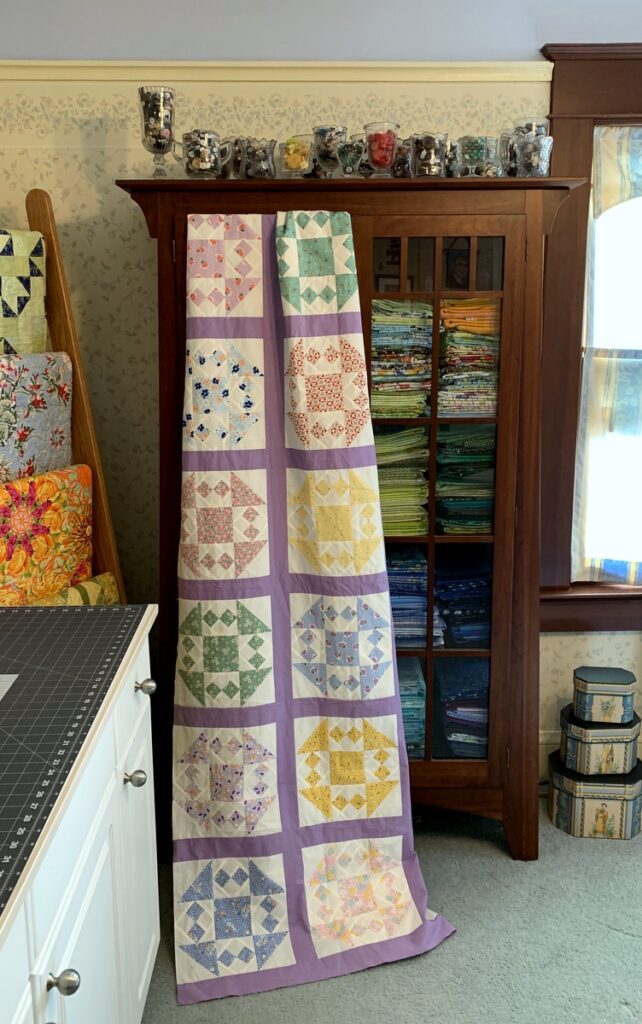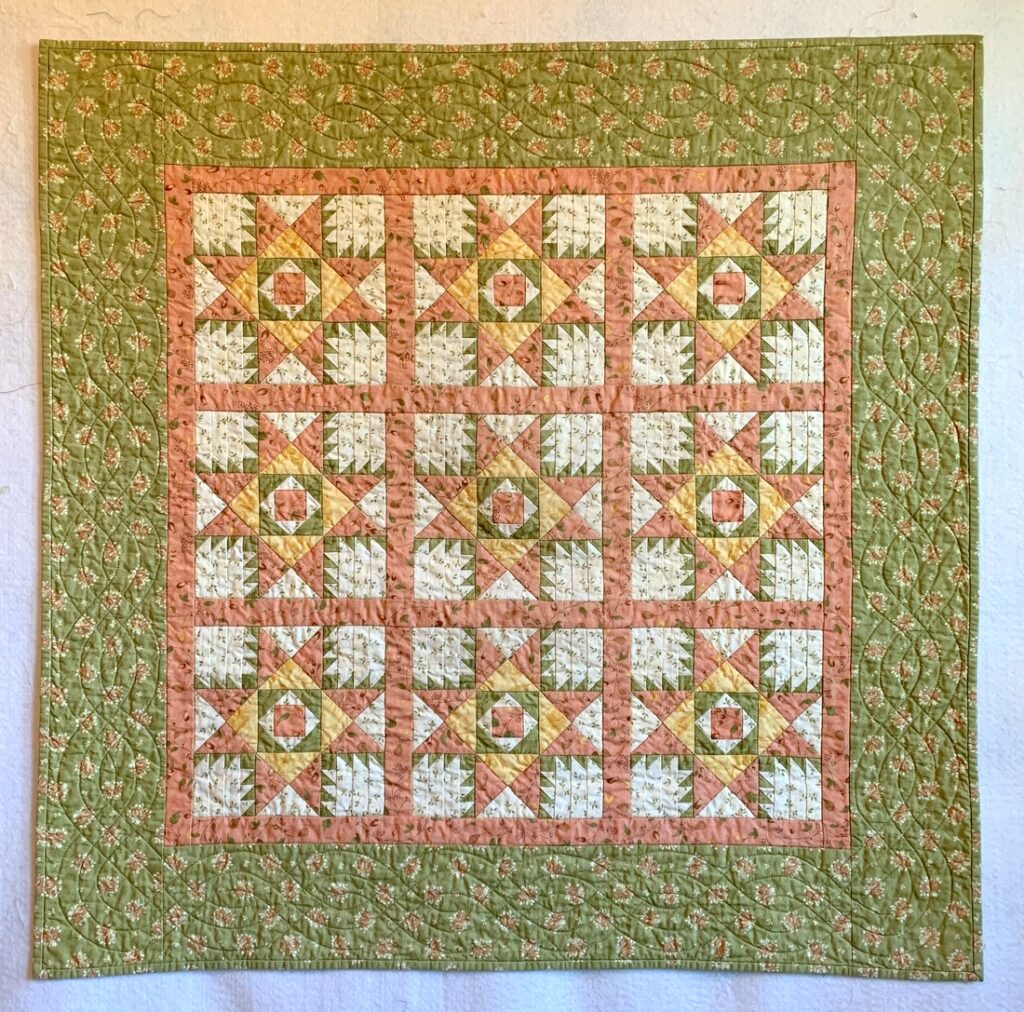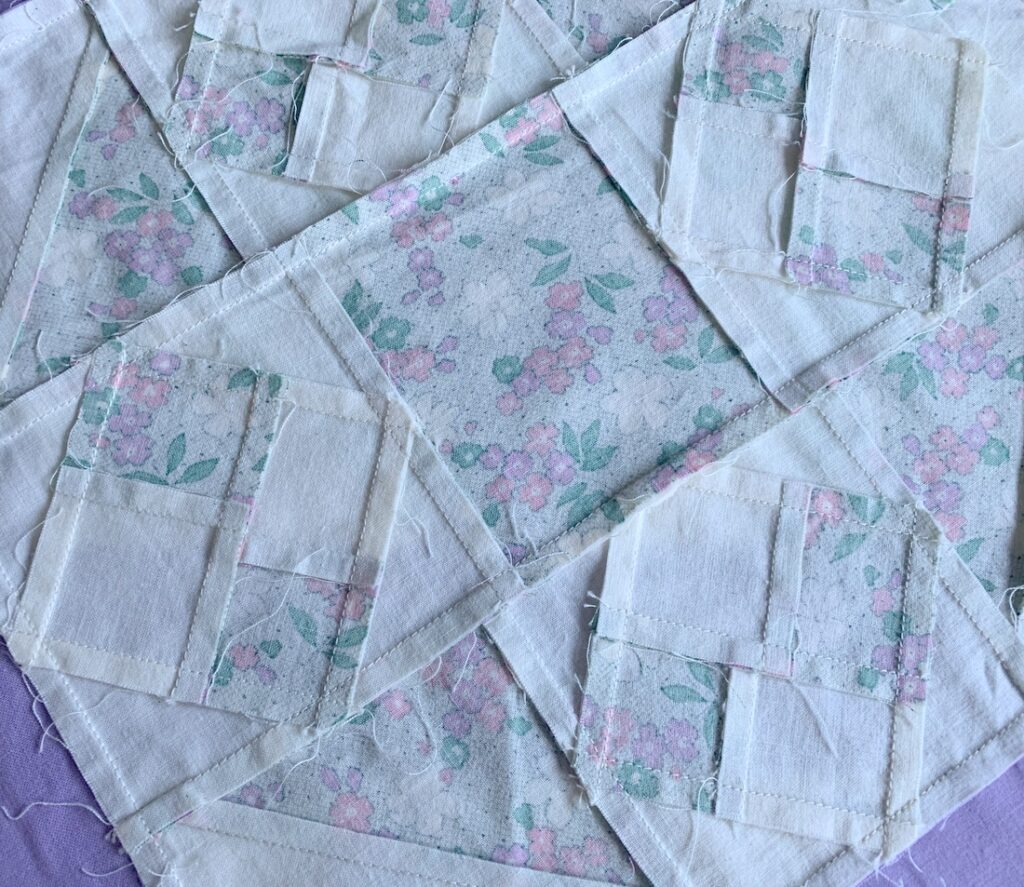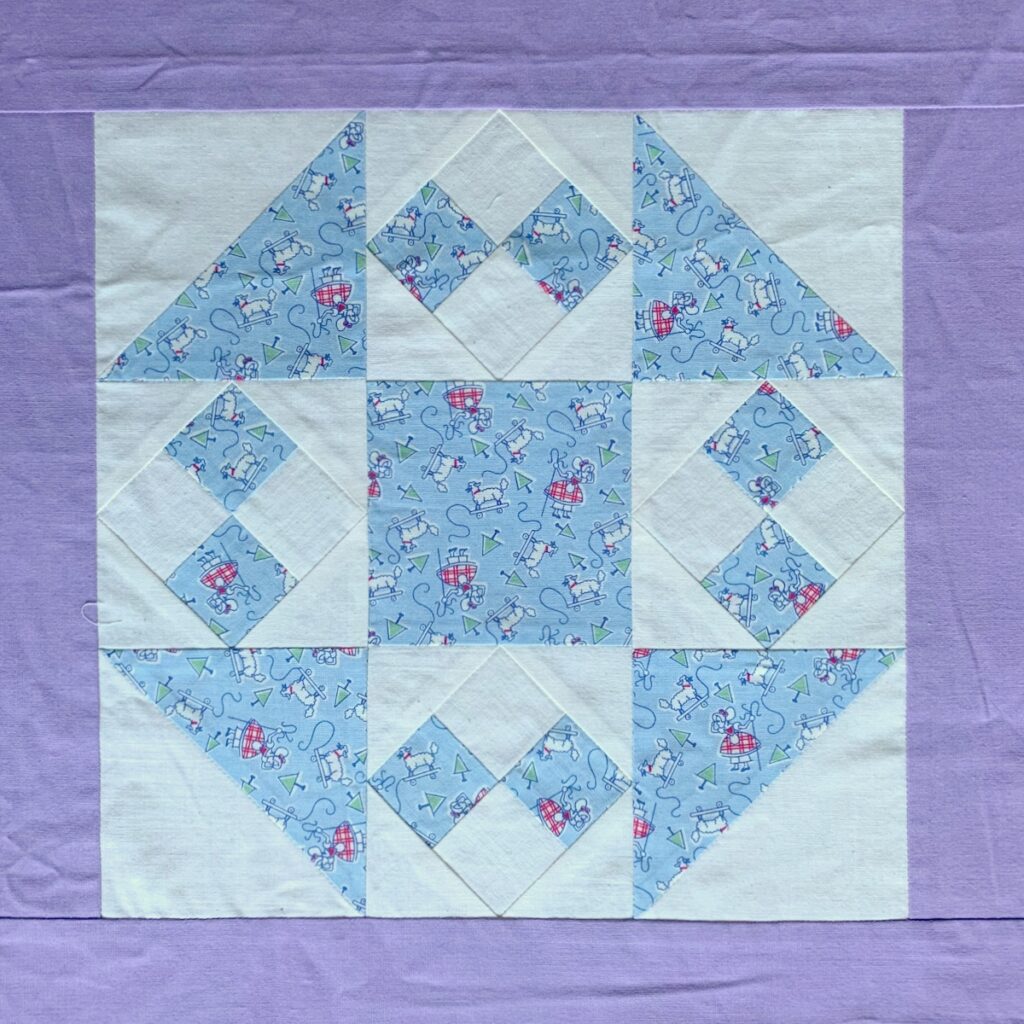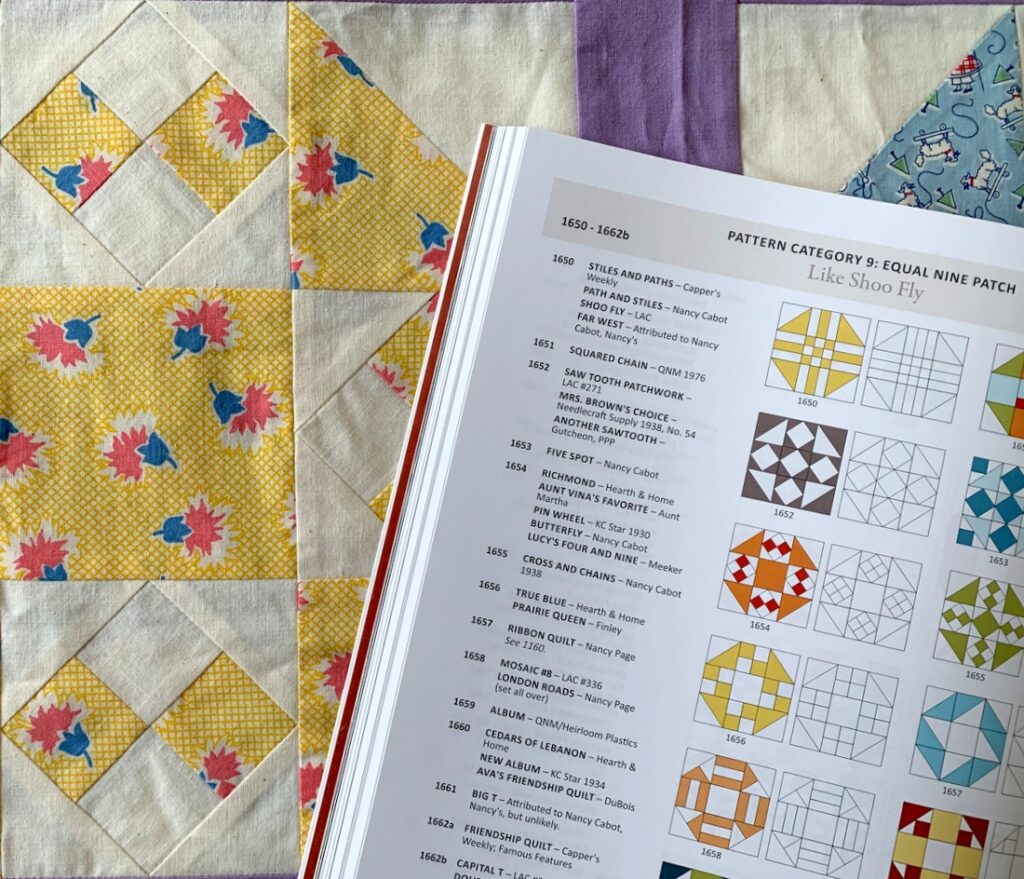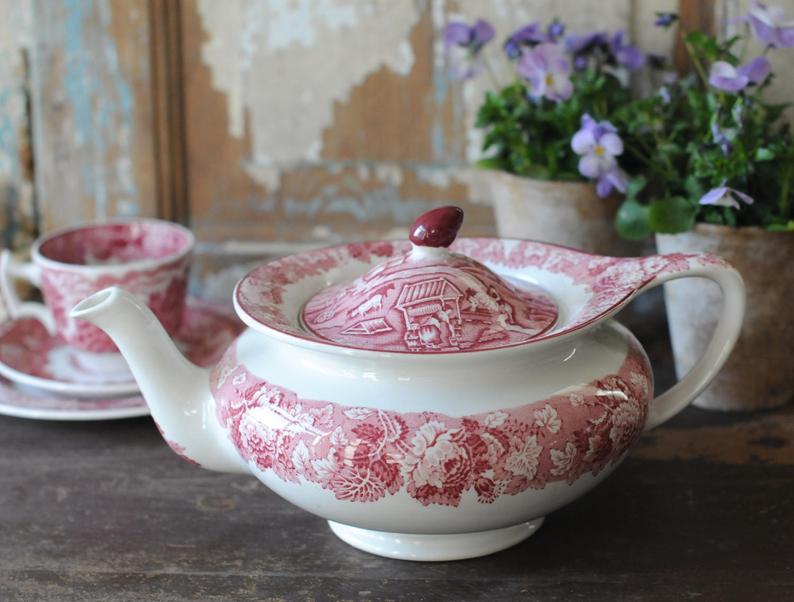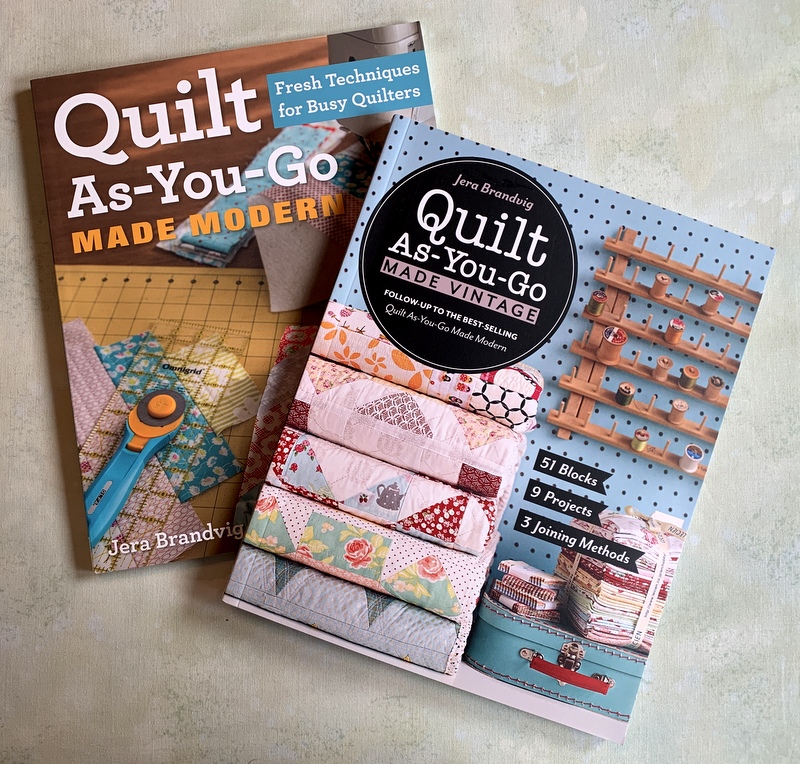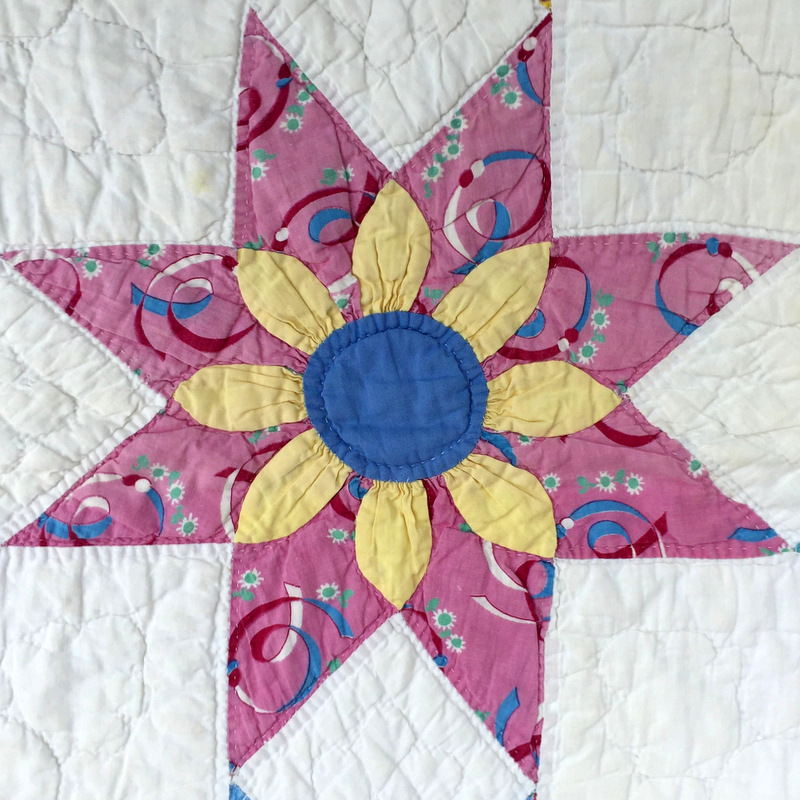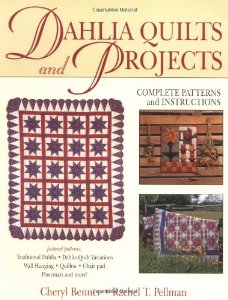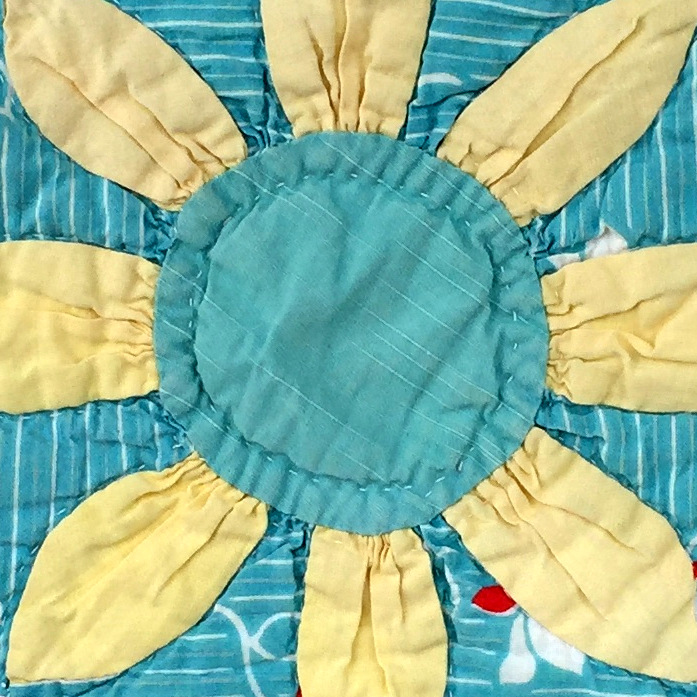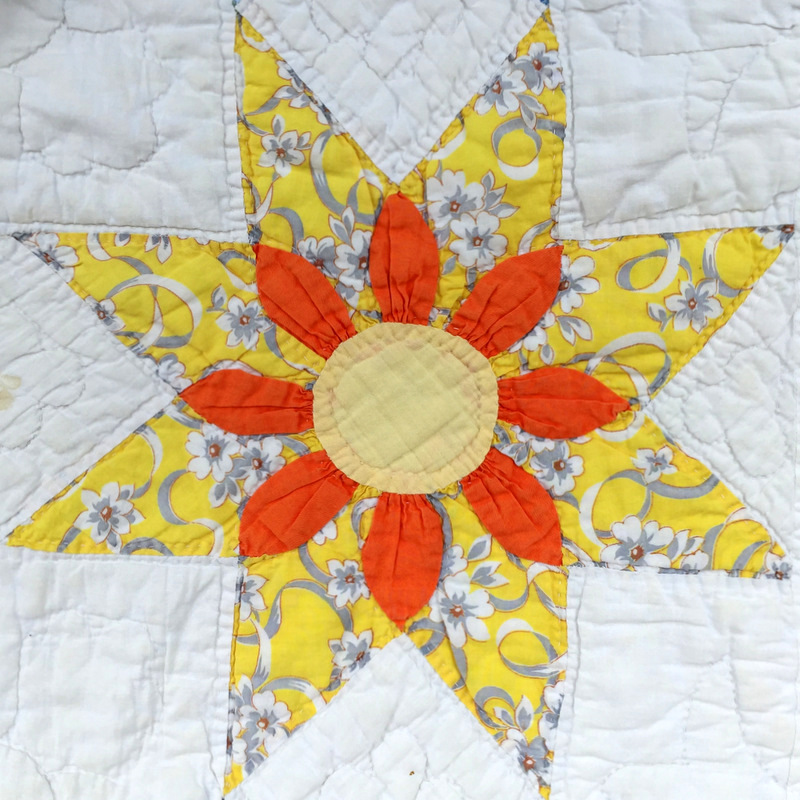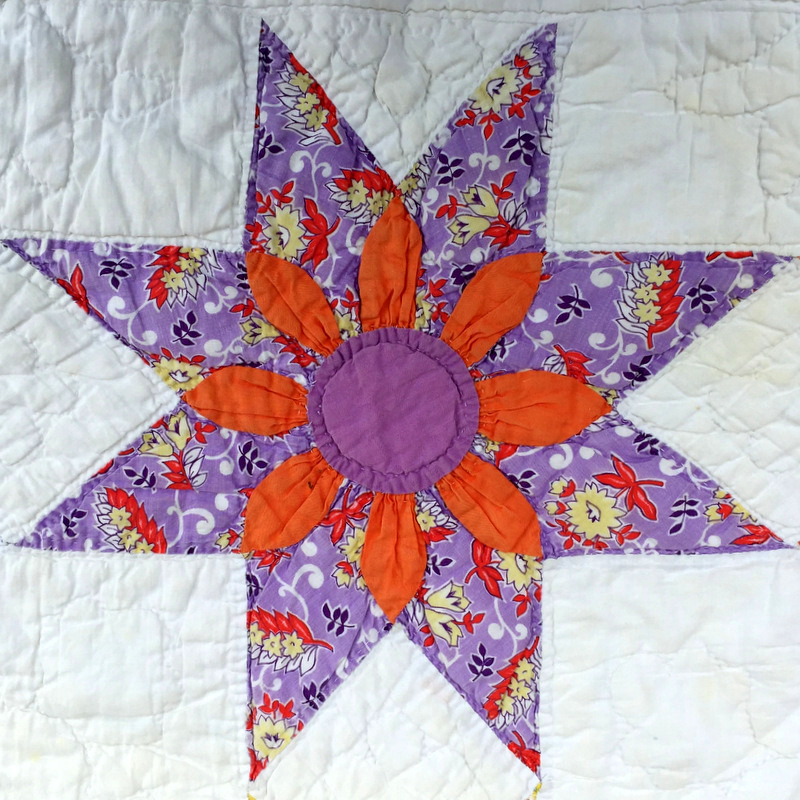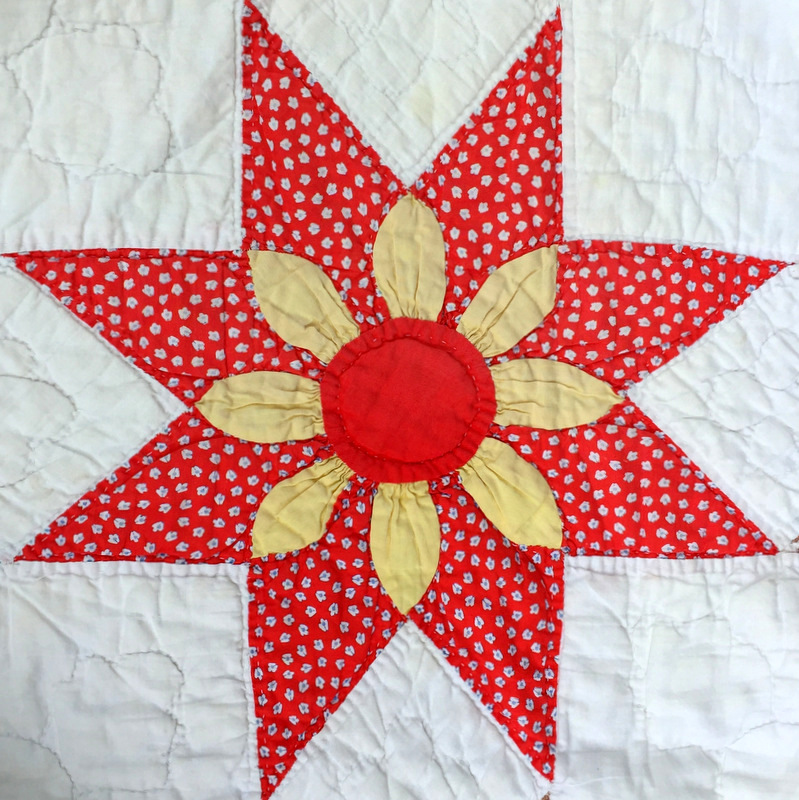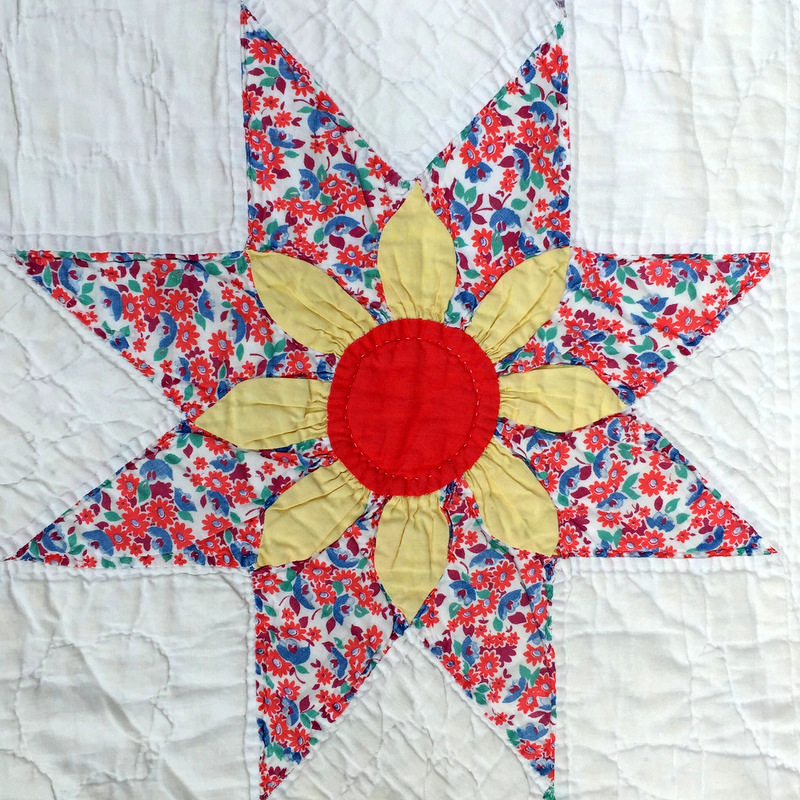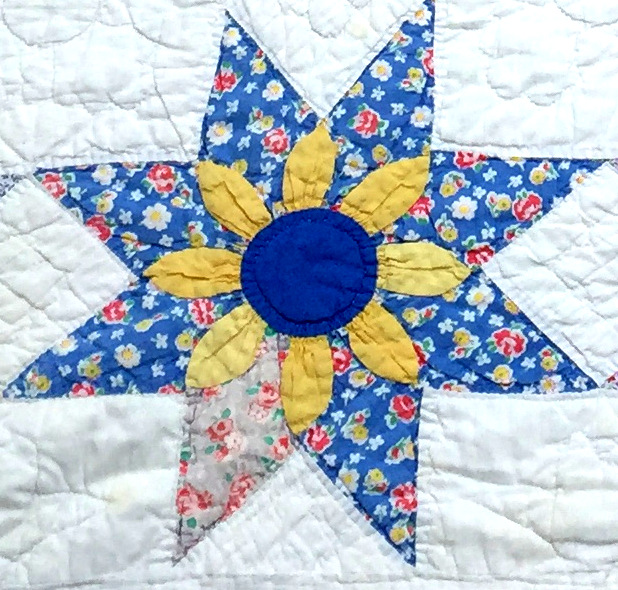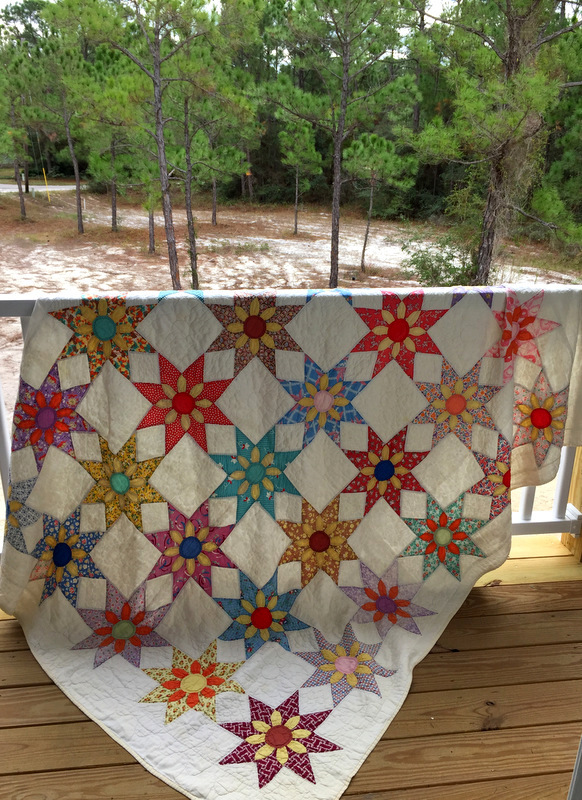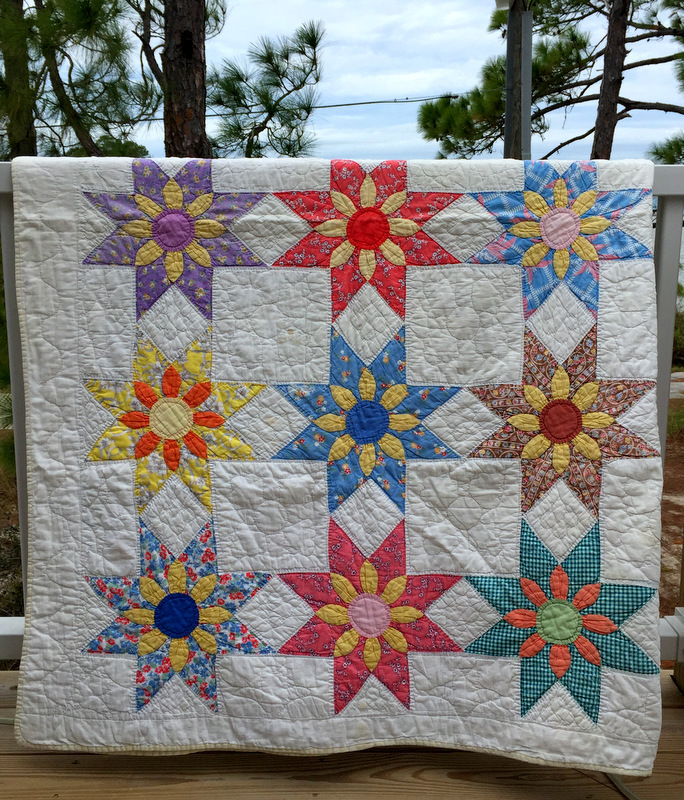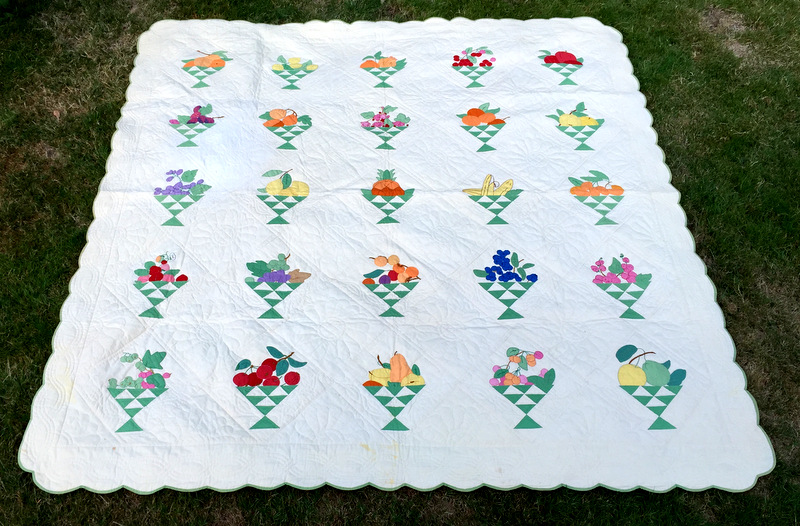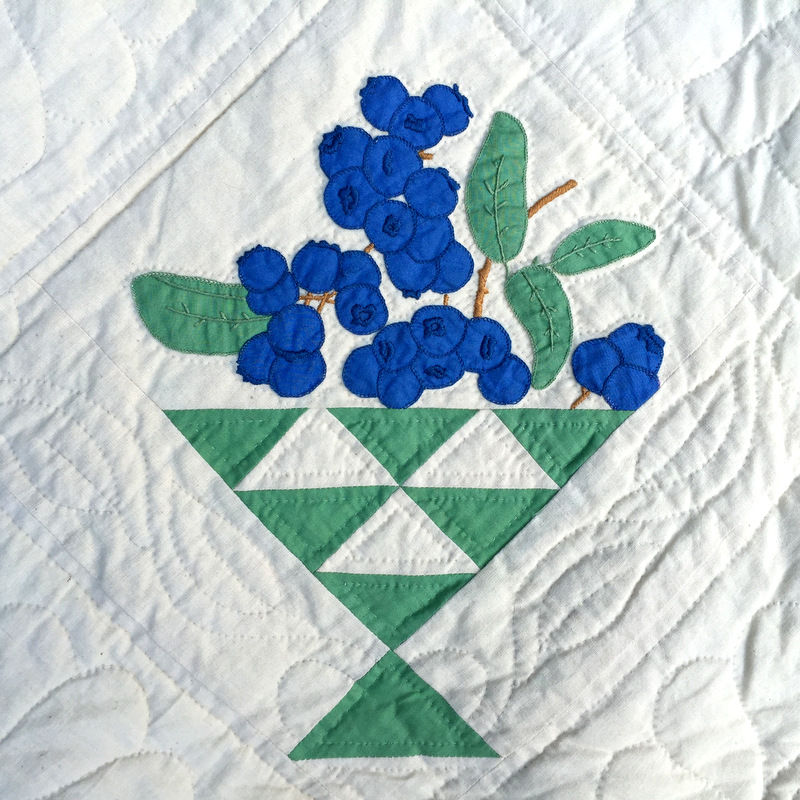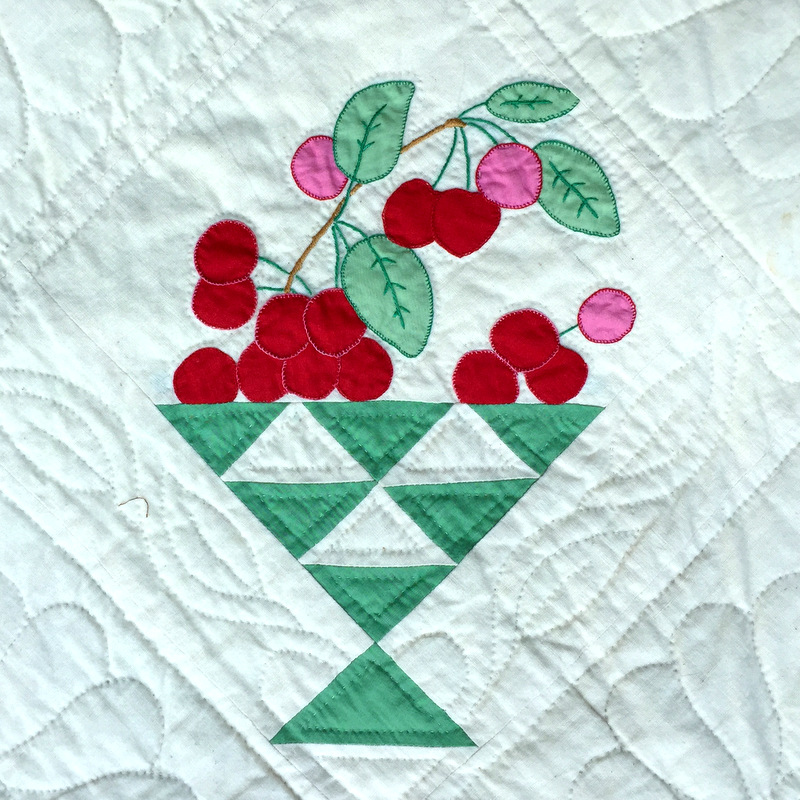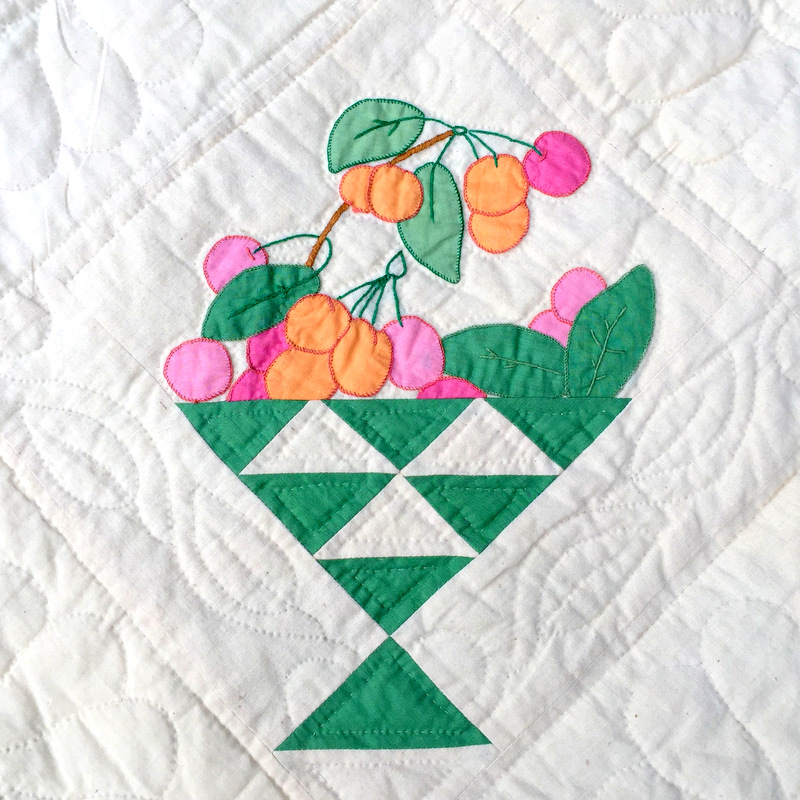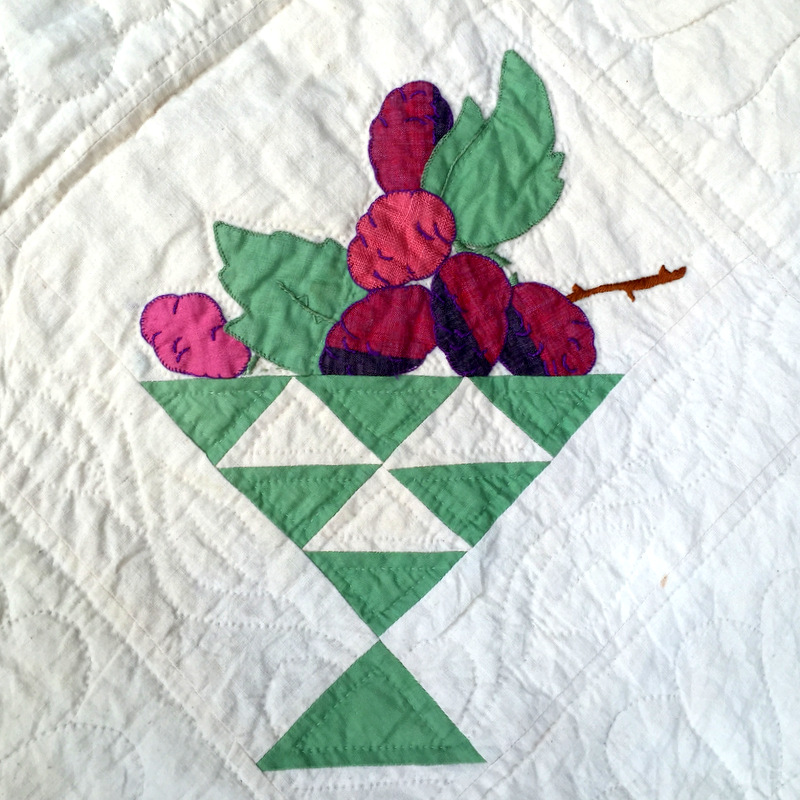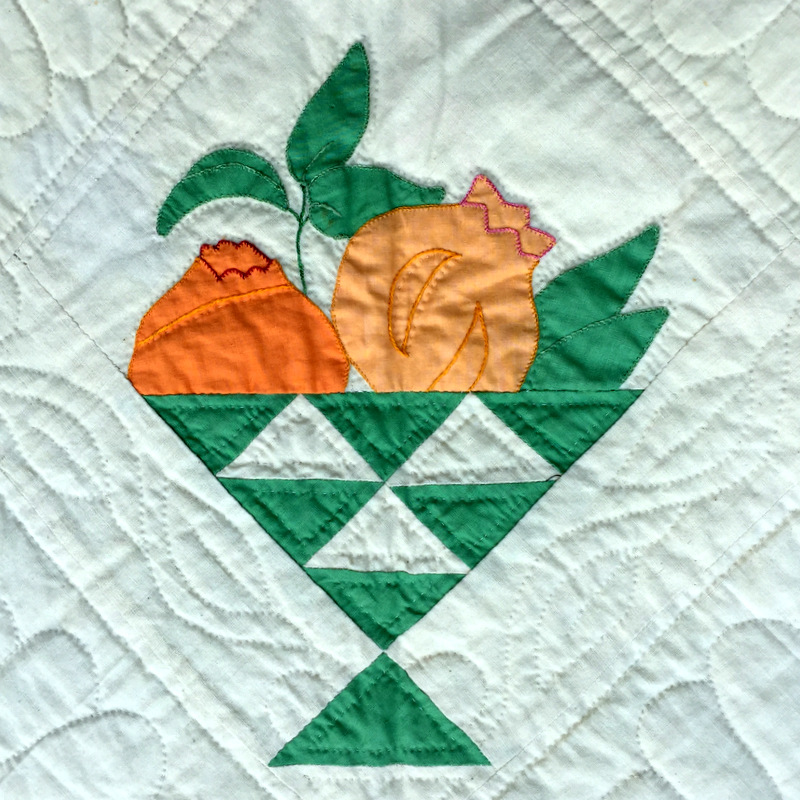 If you are a lover of musical theater, you’ll recognize that line from The King and I, the stage musical and movie based on the experiences of Anna Leonowens, a young British widow who spent five years in Siam (now Thailand) in the 1860s teaching English language and culture to the wives and children of the king.
If you are a lover of musical theater, you’ll recognize that line from The King and I, the stage musical and movie based on the experiences of Anna Leonowens, a young British widow who spent five years in Siam (now Thailand) in the 1860s teaching English language and culture to the wives and children of the king.
“It’s a puzzlement!” the king repeatedly exclaims, as he struggles to understand western ways.
I know how he feels. That phrase has been on my mind since my eagerly awaited copy of Dahlia Quilts and Projects arrived in the mail a few days ago. You’ll know from my last two posts that I ordered this book after swooning over my niece’s vintage star quilt during a visit to her home in Alabama over Thanksgiving.
As a reminder, here is a picture of one of the blocks . . .
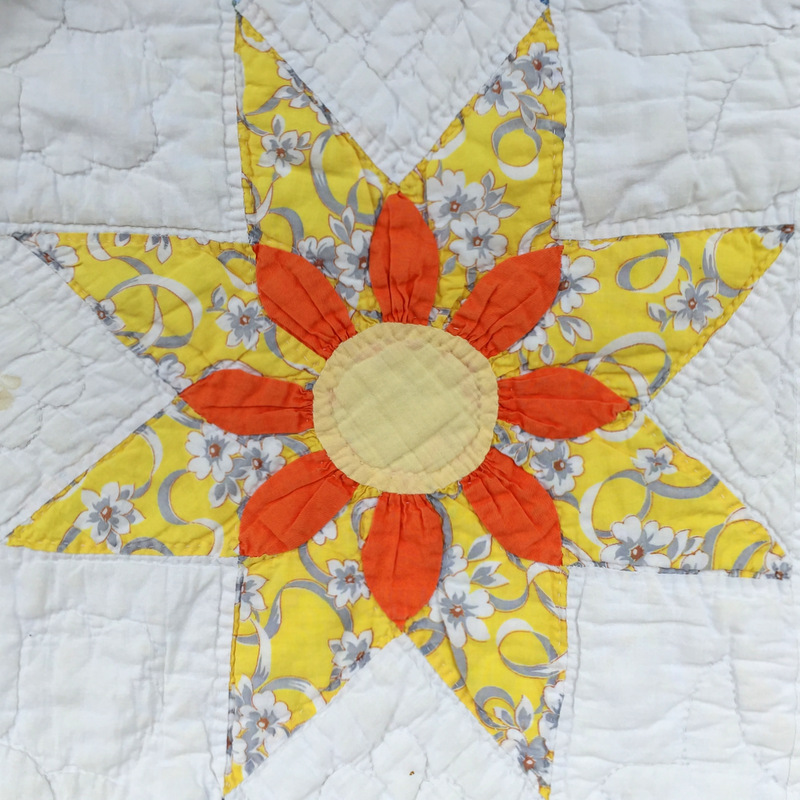
. . . and a picture of the entire quilt:
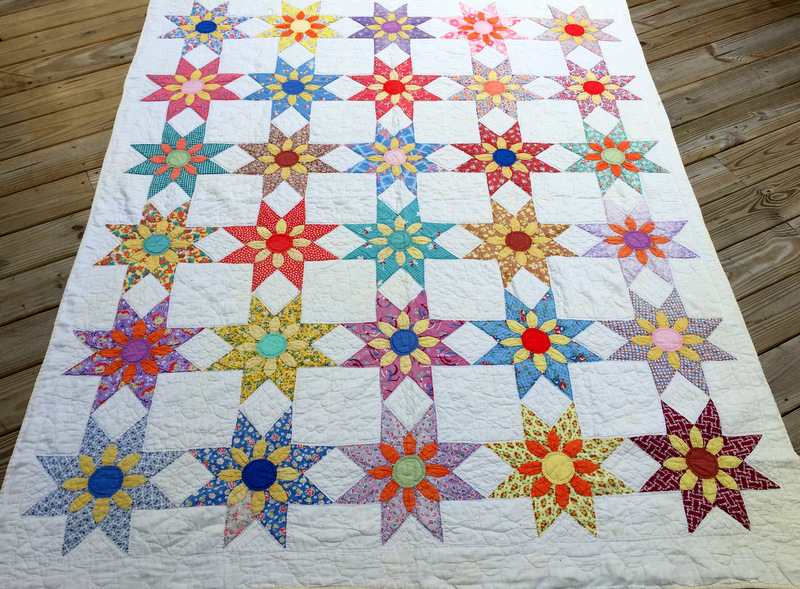
I asked readers for help in determining the origin of the design and quickly learned that my mystery quilt is known as a Star Dahlia. One reader even provided a link to the book, published in 1995, which appears to be the only book available on star dahlia quilts.
Apparently if I lived in Pennsylvania instead of Oregon I would have been able to identify the block readily. Cheryl Benner and Rachel T. Pellman, authors of Dahlia Quilts and Projects, say the pattern has been a favorite of Lancaster County PA quilters for many years. The authors refer to the block as the Dahlia.
“The Dahlia pattern,” they write, “is based on a traditional geometric eight-point star, but it takes a distinct diversion from tradition by adding curved, puffy, gathered petals and a round center. These variations on the basic geometric design make the assembly of the patch more difficult. The compensation for that extra effort, however, is a stunning quilt in three dimensions.” The authors go on to say that their directions for making the blocks were written after consulting with several Lancaster County quilters who are competent makers of Dahlia quilts.
The book contains 10 projects, with many pages of templates and hand-drawn illustrations on how to stitch the components of the block together (by hand, please note). Here’s a look inside the book:
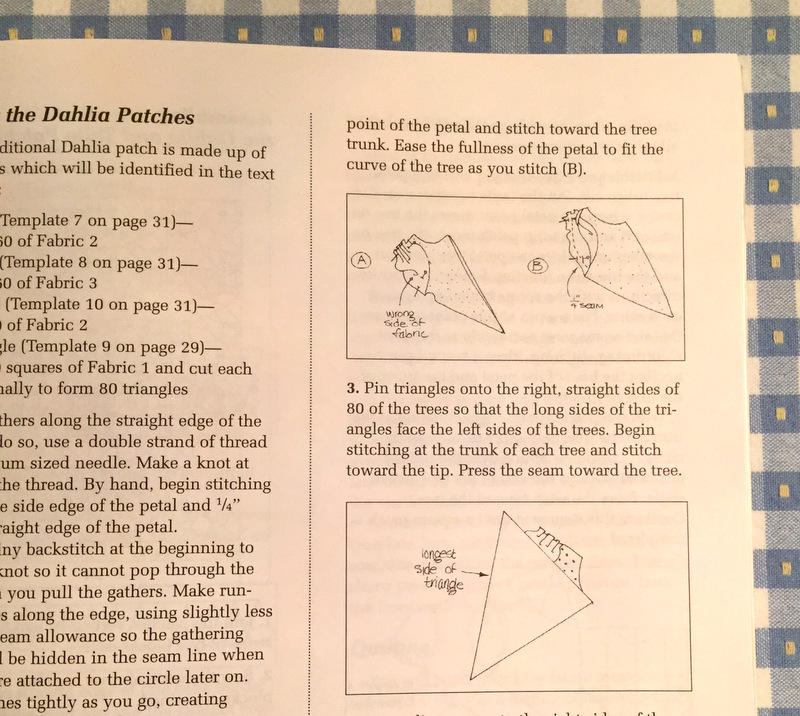
So — the source of my puzzlement? It is this: after reviewing all of the projects and measuring the templates for each project, the logic behind the authors’ “variations on a basic geometric design” continues to elude me.
At first glance the block looks like a basic 9-patch, made up of nine equally sized squares. Not so! There are two sizes of blocks used in the book. The measurements for the larger one call for the four corner squares to finish at 4⅜”. The middle section of the block appears to finish at 6⅛”, making the block’s finished size 14⅞”. Okay, that’s pretty close to 15″, although the instructions don’t state a finished size.
The measurements for the smaller block call for the four corner blocks to finish at 2½”. The middle section appears to finish at 3⅝”. That would produce a block that finishes at 8⅝”. Is your head starting to hurt, too? I’m one of those quilters who enjoys the challenge of figuring out the math involved but I’m not so sure about this one.
The only way I’m going to solve this “puzzlement” is to make a block — to cut out pieces according to the templates and actually put a sample block together. It will also help to dig out my protractor to determine the angle of the star points.
How I wish I could drop everything and attend to this right now! Alas, it will have to wait. Christmas is four short days away. I still have presents to buy and wrap, and the Dear Husband’s stocking is waiting to be filled. I should be dreaming of sugarplum fairies and dancing nutcrackers over the next few days but I have a feeling my head will be filled with dahlia petals and star points.

